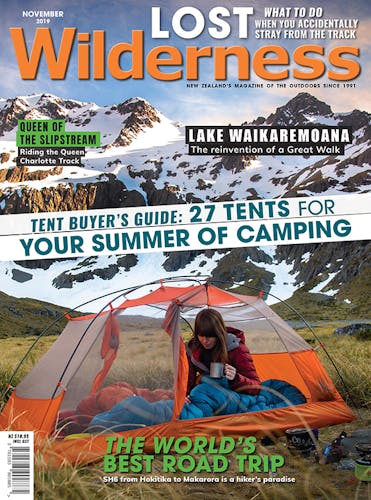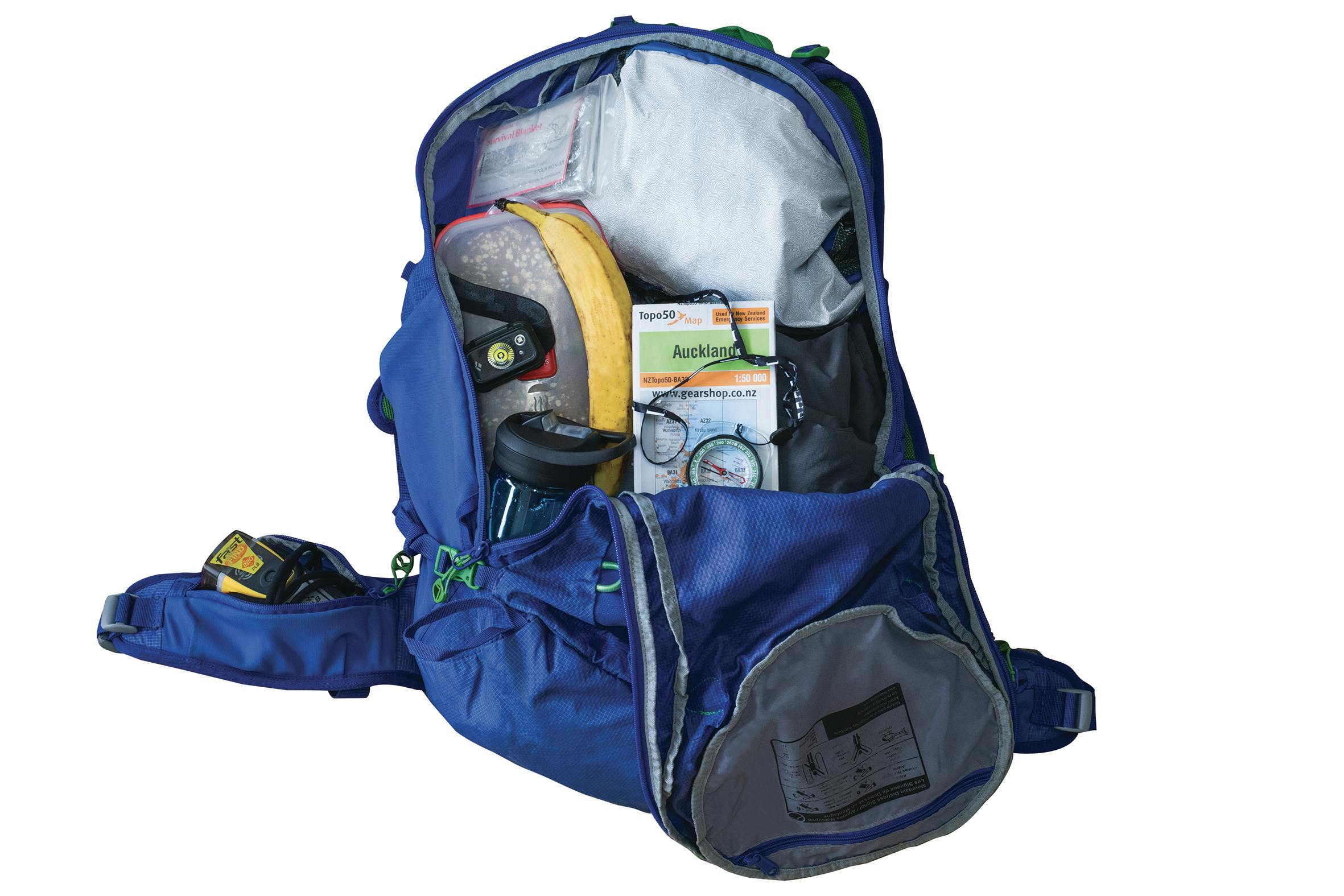When planning a day walk, it’s tempting to pack just the bare minimum to make the most of a weightless walk, but it’s well worth sacrificing weight for safety. Here are five essentials for any day walk.
First aid kit: A lightweight first aid kit should find its way into every tramper’s kit. Customise it to suit the most likely ailments and injuries you might encounter; blisters, sprains, grazes, cuts, insect stings, bites, splinters and personal health issues.
Head torch: Yes, it’s a day walk, but that won’t stop the sun from
setting. Poor planning, time management, injury and navigational issues are just a few of the factors that could see a day walk turn into a night walk – and when tramping in the dark, a head torch is your greatest tool.
A PLB: A multi-day tramper is likely far better equipped for a night in the bush than a daywalker, so it’s worth taking a PLB for that just-in-case scenario. Don’t fall into the ‘it’s only a day walk’ apathy – accidents don’t discriminate, and you’d kick yourself for leaving it at home in an emergency.
Nutrition and hydration: Don’t skimp on food – you’re not carrying it for long, so treat yourself to a fresh lunch, and carry more snacks than you need in case you’re out longer than expected. Plan your water weight around your route and expected trip duration. Don’t take more water than is necessary if there are plenty of opportunities to replenish your supply.
Insulation: Even on a summer’s day, it’s essential to pack enough layers to keep you warm should you become wet, injured or lost. Down jackets and fleece have high warmth to weight ratios and will be barely noticeable when packed. In summer, a waterproof layer might be all you need to stay warm and dry.
How to pack your day pack
- Make it watertight: If you don’t have a waterproof pack cover, consider a waterproof pack liner to keep your gear dry.
- Pack in order of need: Pack what you’re unlikely to use at the bottom, and pack your quick access items in the top or in outer pockets – make it easy for yourself.
- Fold and roll: When you’re walking one day, it’s tempting to stuff and run, but a well-packed bag will be more comfortable and easier to manage. Roll or fold any spare clothing.








